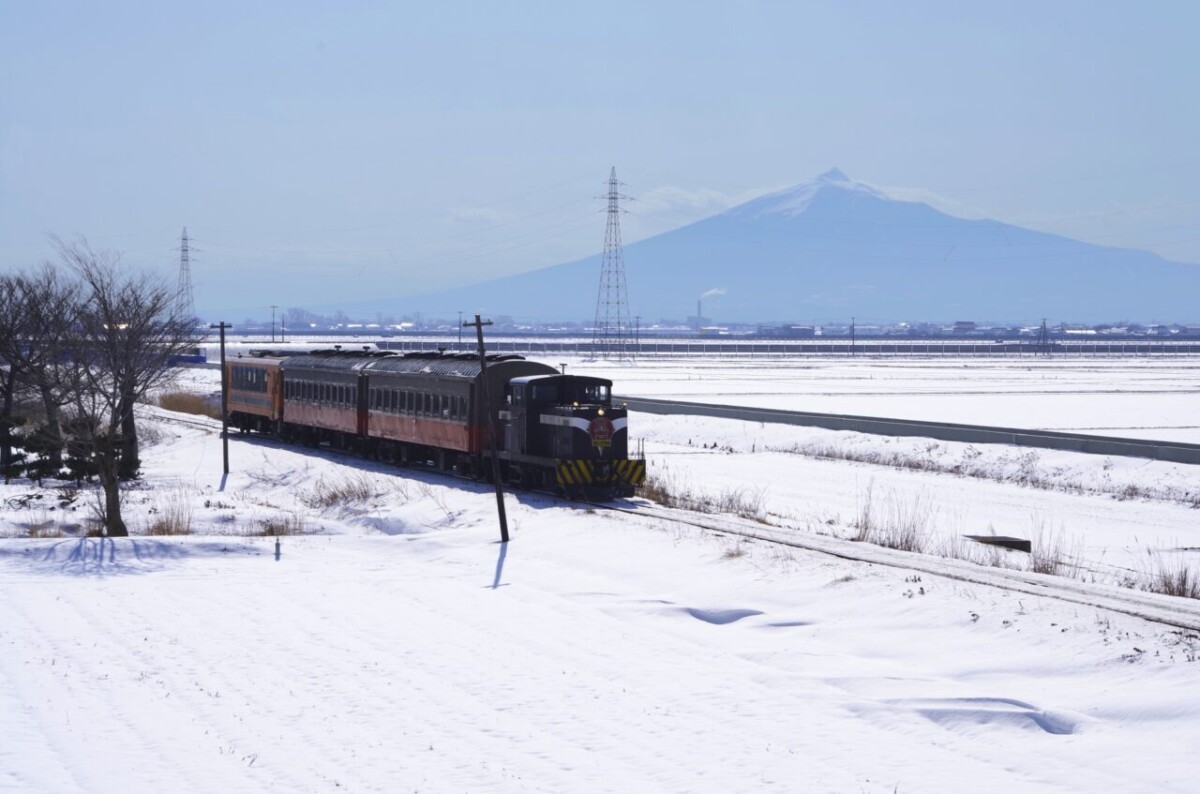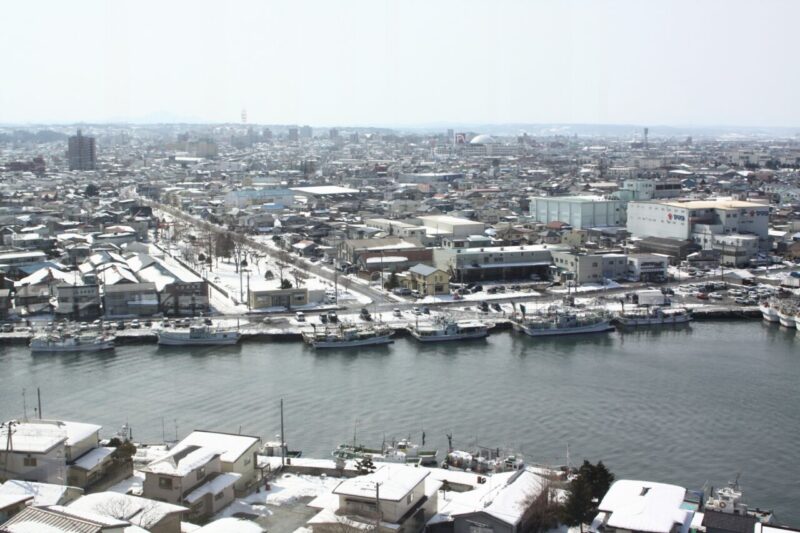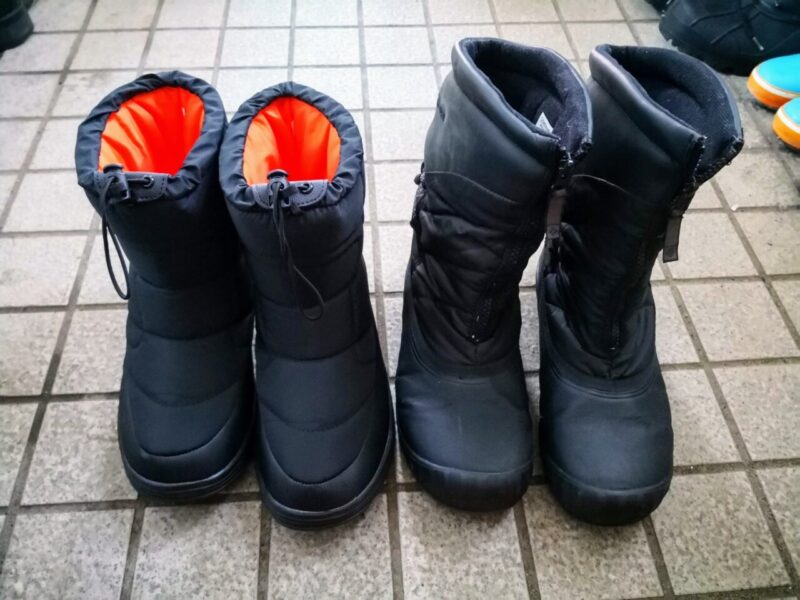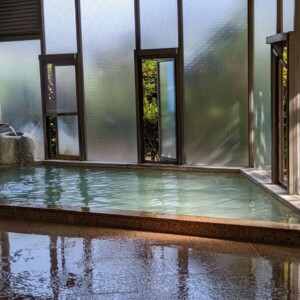
[Aomori Prefecture] How cold is it in Aomori? Introducing cold weather measures for your winter trip to Aomori!
table of contents
- 1 The coldness of winter in Aomori varies depending on the region.
- 2 Shimokita region
- 3 Southern (38 Kamikita) region
- 4 Tsugaru (Higashiao, Seihoku, Chunan) region
- 4.1 January maximum and minimum temperatures and snowfall in the Tsugaru region (Aomori City) (average values from 1981 to 2010)
- 4.2 January maximum and minimum temperatures and snowfall in the Tsugaru region (Hirosaki City) (average values from 1981 to 2010)
- 4.3 January maximum and minimum temperatures and snowfall in the Tsugaru region (Goshogawara City) (average values from 1981 to 2010)
- 5 What should you do to protect yourself from the cold in Aomori?
- 5.1 It's cold outside, but it's quite hot inside!
- 5.2 Sometimes the snow doesn't stop all day long, and sometimes it suddenly turns into a blizzard.
- 5.3 Although the roads are well-removed, there are many places where it is difficult to walk on the sidewalks.
- 5.4 [Cold protection measures] Basically a down jacket
- 5.5 [Countermeasures against the cold] Snow boots are recommended for your feet.
- 5.6 [Cold protection measures] People who are sensitive to cold should consider down pants.
- 5.7 [Countermeasures against the cold] Gloves, earmuffs, and knit hats are also very important.
- 6 Winter traditions that you can experience in Aomori
- 7 Aomori's local cuisine that you want to eat when it's cold
- 8 Summary: Aomori is completely protected and warm in winter! Boots are the best
Speaking of snow, Tohoku! In particular, Aomori's winter cold and amount of snow are different from other prefectures.
Some people who are planning a trip to Aomori for the first time may wonder, "How cold is it in Aomori?"
This time, we will introduce you to the cold weather in Aomori and ways to protect yourself from the cold.
The coldness of winter in Aomori varies depending on the region.
Aomori Prefecture is one of the few prefectures where you can enjoy different climates on the Pacific Ocean and Sea of Japan sides. The coldness of winter also varies greatly depending on the region. We will introduce the differences in coldness depending on the region.
Shimokita region

The Shimokita region is the area around Mutsu City, and is located in the upper right corner of Aomori Prefecture. It also includes Oma Town, which is famous for its tuna fishing.
The maximum and minimum temperatures, snowfall, etc. in January in the Shimokita region are as follows.
This year's cold weather has not set in, so it will be even lower and there will be a lot of snow. The highest and lowest temperatures in Tokyo are 9.8℃/1.2℃, so you can see that it's quite cold.
Maximum and minimum temperatures and snowfall in January in the Shimokita region (Mutsu City) (average values from 1981 to 2010)
- Highest temperature:1.6℃
- Average temperature:-1.4℃
- Lowest Temperature:-5.2℃
- Average snowfall (precipitation): 103.1mm
Number of winter days, midwinter days, etc. (*Aggregation period: August 1, 2019 to July 31, 2020)
- Number of days with minimum temperature below 0 degrees (winter days): 108 days
- Number of days with average temperature below 0 degrees: 40 days
- Number of days with maximum temperature below 0 degrees (midwinter days): 5 days
Data citation: Temperature and rainfall statistics (https://weather.time-j.net/)
Observation point: Mutsu Special Regional Weather Observatory
Southern (38 Kamikita) region

The southern region, also known as Sanpachi-kamikita, is an area located in the south of the prefecture, including Towada City and Hachinohe City.
It has less snowfall compared to the Shimokita and Tsugaru regions, and is characterized by more sunny days than snowy days.
Although it may feel warmer than other regions, the maximum and minimum temperatures are the same as in the Shimokita region, so if you are careless about cold weather measures just because you are on the Pacific coast, you may end up in trouble.
Maximum and minimum temperatures and snowfall in January in the Sanhachi Kamikita region (Hachinohe City) (average values from 1981 to 2010)
- Highest temperature:2.6℃
- Average temperature:-0.9℃
- Lowest Temperature:-4.2℃
- Average snowfall (precipitation): 42.8mm
Number of winter days, midwinter days, etc. (*Aggregation period: August 1, 2019 to July 31, 2020)
- Number of days with minimum temperature below 0 degrees (winter days): 95 days
- Number of days with average temperature below 0 degrees: 25 days
- Number of days with maximum temperature below 0 degrees (midwinter days): 4 days
Data citation: Temperature and rainfall statistics (https://weather.time-j.net/)
Observation point: Hachinohe Special Regional Weather Observatory
Maximum and minimum temperatures and snowfall in January in the Sanhachi Kamikita region (Towada City) (average values from 1981 to 2010)
- Highest temperature:1.8℃
- Average temperature:-1.9℃
- Lowest Temperature:-6.3℃
- Average snowfall (precipitation): 32.8mm
Number of winter days, midwinter days, etc. (*Aggregation period: August 1, 2019 to July 31, 2020)
- Number of days with minimum temperature below 0 degrees (winter days): 123 days
- Number of days with average temperature below 0 degrees: 48 days
- Number of days with maximum temperature below 0 degrees (midwinter days): 9 days
Data citation: Temperature and rainfall statistics (https://weather.time-j.net/)
Observation point: Towada Regional Weather Observatory (AMeDAS)
Tsugaru (Higashiao, Seihoku, Chunan) region

Tsugaru is an area on the Sea of Japan side that includes cities such as Aomori City, Hirosaki City, and Goshogawara City. In winter, there are many days when it snows due to the cold and humid air, and there are many areas with snowfall of over 100 cm. Sukayu, which you hear about in the winter news, also falls in the Tsugaru region.
By the way, Aomori City is said to have the highest annual snowfall of any city with a population of 100,000 or more in the world It's surprising that it snows the most in the world.
Although it is not the coldest in the world, the northwest seasonal wind blows from the Tsugaru Mountains on the Sea of Japan side, and the southwest wind blows from the Hakkoda Mountains, creating an updraft over Aomori City, and the conditions for snow to fall are met, so it snows. It has been with.
January maximum and minimum temperatures and snowfall in the Tsugaru region (Aomori City) (average values from 1981 to 2010)
- Highest temperature:1.6℃
- Average temperature:-1.2℃
- Lowest Temperature:-3.9℃
- Average snowfall (precipitation): 144.9mm
Number of winter days, midwinter days, etc. (*Aggregation period: August 1, 2019 to July 31, 2020)
- Number of days with minimum temperature below 0 degrees (winter days): 85 days
- Number of days with average temperature below 0 degrees: 25 days
- Number of days with maximum temperature below 0 degrees (midwinter days): 7 days
Data citation: Temperature and rainfall statistics (https://weather.time-j.net/)
Observation point: AMeDAS Aomori Local Weather Observatory
January maximum and minimum temperatures and snowfall in the Tsugaru region (Hirosaki City) (average values from 1981 to 2010)
- Highest temperature:1.5℃
- Average temperature:-1.8℃
- Lowest Temperature:-5.0℃
- Average snowfall (precipitation): 120.7 mm
Number of winter days, midwinter days, etc. (*Aggregation period: August 1, 2019 to July 31, 2020)
- Number of days with minimum temperature below 0 degrees (winter days): 98 days
- Number of days with average temperature below 0 degrees: 37 days
- Number of days with maximum temperature below 0 degrees (midwinter days): 6 days
Data citation: Temperature and rainfall statistics (https://weather.time-j.net/)
Observation point: AMeDAS Hirosaki Observatory
January maximum and minimum temperatures and snowfall in the Tsugaru region (Goshogawara City) (average values from 1981 to 2010)
- Highest temperature:1.5℃
- Average temperature:-1.4℃
- Lowest Temperature:-4.6℃
- Average snowfall (precipitation): 119.4cm
Number of winter days, midwinter days, etc. (*Aggregation period: August 1, 2019 to July 31, 2020)
- Number of days with minimum temperature below 0 degrees (winter days): 95 days
- Number of days with average temperature below 0 degrees: 28 days
- Number of days with maximum temperature below 0 degrees (midwinter days): 6 days
Data citation: Temperature and rainfall statistics (https://weather.time-j.net/)
Observation point: AMeDAS Goshogawara Regional Weather Observatory
What should you do to protect yourself from the cold in Aomori?
I think I was able to convey the temperature and amount of snow in various parts of Aomori Prefecture. However, some people may be worried that they don't know how to protect themselves from the cold because they have never experienced the cold in Aomori.
I have listed some points that I think are important when dealing with the cold.
- It's cold outside, but it's quite hot inside!
- Sometimes the snow doesn't stop all day long, and sometimes it suddenly turns into a blizzard.
- Although the roads are well-removed, there are many places where it is difficult to walk on the sidewalks.
I think this is a point that should be kept in mind.
It's cold outside, but it's quite hot inside!
First (1) , people in cold regions like Hokkaido and Aomori tend to keep their rooms extremely warm and wear light clothing . Therefore, if you try to protect yourself from the cold by wearing too many layers, you may end up sweating because you won't be able to adjust your temperature, and then go outside and the sweat gets cold and you might catch a cold. Therefore, it is important to have measures against the cold that are easy to put on and take off
Sometimes the snow doesn't stop all day long, and sometimes it suddenly turns into a blizzard.
Next, (2) is the amount of snow. There is a saying that "there is no rain that never stops," but the snow in Aomori often continues to fall all day long. Sometimes the wind suddenly picks up and a snowstorm In such cases, it is quite important to wear clothes with a hood
It's quite stressful to have snow hitting your face... In such a case, put your hood over your head and walk with your head down!
Although the roads are well-removed, there are many places where it is difficult to walk on the sidewalks.
(3) is the foot. It snows anyway, so even if the snow is removed in the morning, it often snows again by noon. Roadways are frequently cleared of snow as it can lead to car accidents, but this is not the case with sidewalks. There's a good chance you'll have to wade through snow even in central Aomori. So you need to prepare your feet well.

shows the taxi and bus stops at Shin-Aomori Station on the Tohoku Shinkansen when I visited Aomori in December 2022 It depends on the time of day and the weather, but it's common to walk on snowy roads like this.
[Cold protection measures] Basically a down jacket

In the case of a coat, you need to layer it inside to protect yourself from the cold, but with a down jacket, you can just put it on over light clothes or take it off! It is warm and easy to adjust the temperature in common travel situations such as getting in and out of the car and moving indoors and outdoors.
I think a down jacket is a must-have item because it is easy to put on and take off, has a hood, and is warm
[Countermeasures against the cold] Snow boots are recommended for your feet.

I think most people who live in non-snowy areas don't have them on hand, but snow boots are a really nice item. , it is easy to put on and take off, (1) mentioned above There is no problem with regular boots, but I think there are quite a few situations where boots can be a nuisance, such as when going up to the tatami room at an izakaya or taking off your shoes at an inn or hotel In this respect, shoes that are easy to put on and take off are a big plus.
Furthermore, (3) when walking on snowy roads. If you're wearing snow boots, you can walk without any problems as long as the snow doesn't accumulate too much. Best of all, much lighter than regular boots , making them easier to walk in.
Some people may say it's embarrassing because you can't get used to wearing them, but there's no problem at all! When you arrive in Aomori, there is a high probability that everyone will be wearing them!
[Cold protection measures] People who are sensitive to cold should consider down pants.

I don't think this is necessary, but I really don't like the cold! If so, you may want to consider down pants. Basically, pants made of down jacket material .
I think this will solve the cold problem unless you go to a very mountainous area It's a little bulky, but you can also layer thin down pants under regular pants
[Countermeasures against the cold] Gloves, earmuffs, and knit hats are also very important.
I think everyone carries gloves, but it might be a good idea to also pack earmuffs and a knit hat. When it's cold, protecting your ears and head will make a big difference! Carrying some hand warmers with you will also come in handy in emergencies.
Winter traditions that you can experience in Aomori
When traveling to Aomori in winter, you need to enjoy the snow and cold weather in Aomori. Looks like you don't have time to shiver in the cold. We would like to introduce three winter traditions in Aomori.
blizzard

You may have heard of blizzards, but the chance to experience them is rare, even in Tohoku and other regions.
A ground blizzard is a phenomenon in which snow is blown up by strong winds, obstructing visibility. A blizzard not only makes it difficult to see in front of you, but also makes it difficult to stand and breathe, and the temperature can feel as much as -10°C lower than the average temperature.
I don't want to experience a blizzard if possible, but there is a ``jibubuki experience tour'' in Aomori, so if you are interested, why not join and experience it for yourself?
Reference: Snow country blizzard experience | Aomori Prefecture tourist information site
stove train

Do you know about stove trains? The Stove Train is a famous train of the Tsugaru Railway that runs in the Oku-Tsugaru region.
The operating period is from December to the end of March. A Daruma stove is installed inside the train, and you can see the snowstorm from the train window. This is a train unique to Aomori that you cannot experience anywhere else.

The stove train operates on limited days, so if you want to ride the stove train, please check the Tsugaru Railway website.
Reference: Stove train | Tsugaru Railway Co., Ltd.
snow lantern

In areas where there is a lot of snow, many places set up snow lanterns, but the Hirosaki Castle Snow Lantern Festival, held at Hirosaki Castle, is a great place to see the castle, snow lanterns, and the beautiful Tsugaru Nishiki-e Corridor with its beautiful Neputa Nishiki-e paintings. You can The venue will be Hirosaki Park.
In 2023, it will be held from February 9th to 12th, and approximately 150 snow lanterns will be installed throughout the park, as well as 300 mini kamakura.
The snow lanterns are lit up at night, so why not enjoy the magical space?
Reference: Hirosaki Castle Snow Lantern Festival | Hirosaki Tourism and Convention Association
Aomori's local cuisine that you want to eat when it's cold
When traveling in the cold winter, be sure to try Aomori's warm local cuisine! Eat hot food and take a bath in a hot spring. Please feel warm in body and soul.
Kenojiru (porridge soup)

You'll want some warm soup to warm up your cold body. Kenojiru is a local dish that has been loved in the Tsugaru region.
It is a soup made by finely chopping vegetables such as daikon radish, carrots, and burdock root, wild vegetables such as butterbur and bracken, fried tofu, and frozen tofu, then seasoning them with miso, and is also known as ``Tsugaru's seven-herb porridge.''
It is said that people would make a lot of it in the winter and eat it while reheating it for several days.
The mushroom soup with lots of ingredients will warm your heart.
Rice cracker soup

Senbei soup is a local dish eaten in the southern region of Hachinohe, and is a dish made by adding Nanbu rice crackers and boiling them. Other than Nanbu rice crackers, other ingredients include chicken, vegetables, and mushrooms.
Nanbu rice crackers for rice cracker soup are tasteless rice crackers. It has a texture that is different from mochi or wheat gluten, and once you eat it, you will become addicted to it.
Reference: Aomori culture (local cuisine) | Aomori Prefecture
Summary: Aomori is completely protected and warm in winter! Boots are the best
We provided a detailed introduction to the cold winter weather in Aomori and how to protect yourself from the cold.
Aomori Prefecture is the coldest city in the world among cities with a population of 100,000 or more. A little further away from Aomori City, there are areas with over 300 cm of snow, so you can enjoy many different experiences from everyday life.
Please come and experience an experience that can only be experienced in winter.
However, when traveling to Aomori, please take measures against the cold. Let's go to Aomori fully protected and warm.




![[Shimokita Peninsula, Aomori Prefecture] Geopark Shimokita Peninsula. A rich hot spring springs from the northernmost peninsula of Honshu 24734759_m](https://jp.neft.asia/wp-content/uploads/2023/02/24734759_m-150x150.jpg)
![The mysterious world of the Shimokita Peninsula of Geopark: "The northern limit of monkeys on Osoreyama and Butsugaura" [Aomori Prefecture] 25110883_m](https://jp.neft.asia/wp-content/uploads/2022/11/25110883_m-150x150.jpg)
![The gorgeous "Noheji Gion Festival" and Kitamae Ship port call "Noheji" [Aomori Prefecture] 4031_Noheji Gion Festival](https://jp.neft.asia/wp-content/uploads/2023/03/27d8816076df6701eb2d6ec6c91e5169-150x150.jpg)
!["Yaki Ikadori" is famous for its squid curtains! Many repeat customers are coming to the condensed flavor [Aomori Prefecture] 1088_Squid Curtain](https://jp.neft.asia/wp-content/uploads/2018/11/621b49eff7eed2fb8caee235a00963e0-150x150.jpg)
![[Aomori Prefecture] Not just food! Shining techniques from Tohoku! 5 selections of craft souvenirs 1 Tsugaru lacquer](https://jp.neft.asia/wp-content/uploads/2021/11/832bdccffb961dac52ac9e3b69594280-150x150.jpg)
![[Aomori Prefecture] Let's go on a journey to see clay figures! Introducing highlights and spots! doguu1](https://jp.neft.asia/wp-content/uploads/2023/02/doguu1-150x150.jpg)

![[Aomori Prefecture] 6 recommended beaches in Aomori Prefecture! Aomori Prefecture is full of oceans, including the Pacific Ocean, the Sea of Japan, Mutsu Bay, and the Tsugaru Strait! Aomori_Asamu](https://jp.neft.asia/wp-content/uploads/2023/07/0f45f17b8ba09afb066a09880e47091d-150x150.jpg)











